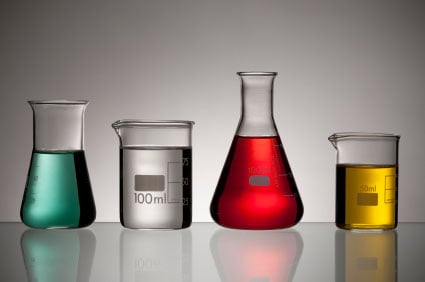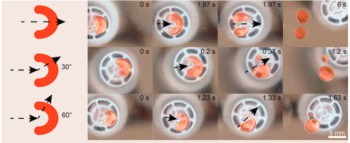
Physicists in the UK and Russia have revived concepts first put forth in the 1940s to develop a new theory of the heat capacity of liquids. Created by Dima Bolmatov and Kostya Trachenko of Queen Mary, University of London and Vadim Brazhkin of the Institute for High Pressure Physics in Moscow, the new “phonon theory of liquid thermodynamics” has successfully predicted the heat capacity of 21 different liquids ranging from metals to noble and molecular liquids. The researchers say that the theory covers both the classical and quantum regimes and agrees with experiment over a wide range of temperatures and pressures.
While physicists have a good theoretical understanding of the heat capacity of both solids and gases, a general theory of the heat capacity of liquids has always remained elusive. Apart from being an awkward hole in our knowledge of condensed-matter physics, heat capacity – the amount of heat needed to change a substance’s temperature by a certain amount – is a technologically relevant quantity that it would be nice to be able to predict. Bolmatov says that physicists had been reluctant to develop a theory because the relevant interactions in a liquid are both strong and specific to that liquid, which, it was felt, would make it tricky to develop a general way of calculating heat capacity for liquids.
Classical and quantum coverage
Using phonons – quantized lattice vibrations that behave like particles – to develop a theory of specific heat is nothing new in the world of solids. After all, the atoms in a solid oscillate about fixed points in the lattice, which means that the only way that heat – in the form of randomly vibrating atoms – can move through a material is via phonons. Indeed, Albert Einstein and Peter Debye famously developed separate theories early in the 20th century to explain the high-temperature and low-temperature heat capacity of solids, respectively.
But, given that the atoms in a liquid are free to move and so can absorb or transfer heat without any need for phonons, it is not at first glance obvious why phonons should be a good way of describing how heat is transferred and absorbed in a liquid. Anyone who has dunked their head under water knows that sound propagates very well in liquids – in the form of longitudinal phonons. What is not obvious, though, is whether transverse or “shear” phonons, which exist in solids, also occur in liquids. Because each phonon mode contributes to the specific heat, it is very important to know how many modes occur in a liquid of interest.
The Frenkel frequency
This problem was first tackled in the 1940s by the Russian physicist Yakov Frenkel. He pointed out that for vibrations above a certain frequency (the Frenkel frequency), molecules in a liquid behave like those in a solid – and can therefore support shear phonons. His idea was that it takes a characteristic amount of time for an atom or molecule to move from one equilibrium position in the liquid to another. As long as the period of the vibration is shorter than this time, the molecules will vibrate as if they are fixed in a solid.
With this in mind, Bolmatov and colleagues derived an expression for the energy of a liquid in terms of its temperature and three parameters – the liquid’s coefficient of expansion, and its Debye and Frenkel frequencies. The Debye frequency is the theoretical maximum frequency that atoms or molecules in the liquid can oscillate at and can be derived from the speed of sound in the liquid. The Frenkel frequency puts a lower bound on the oscillation frequency of the atoms or molecules and can be derived from the viscosity and shear modulus of the liquid.
Agrees with the data
The result is an expression for specific heat as a function of temperature that can be compared with experimental data. In all 21 liquids studied, the theory was able to reproduce the observed drop in heat capacity as temperature increases. The physicists explain this drop in terms of an increase in the Frenkel frequency as a function of temperature. As the material gets hotter, there are fewer shear phonon modes available to transport heat and therefore the heat capacity drops.
The theory was able to describe simple liquids – such as the noble liquids, which comprise atoms – through to complicated molecular liquids such as hydrogen sulphide, methane and water. The physicists say that this broad agreement suggests that Frenkel’s original proposal that the phonon states of the liquid depend upon a characteristic time applies to a wide range of materials. The result is that physicists should be able to predict the specific heat of many liquids without having to worry about complicated interactions between constituent atoms or molecules.
Bolmatov told physicsworld.com that there are two reasons why it took so long for Frenkel’s ideas to be applied to heat capacity. “The first is that it took 50 years to verify Frenkel’s prediction,” he says. The second reason is that historically the thermodynamic theory of liquids was developed from the theory of gases, not the theory of solids – despite the similarities between liquids and solids. “This development had a certain inertia associated with it and consequently resulted in some delays and more thought was required for proposing that Frenkel’s idea can be translated into a consistent theory of liquid thermodynamics.”
The work is described in Scientific Reports 2 421.



